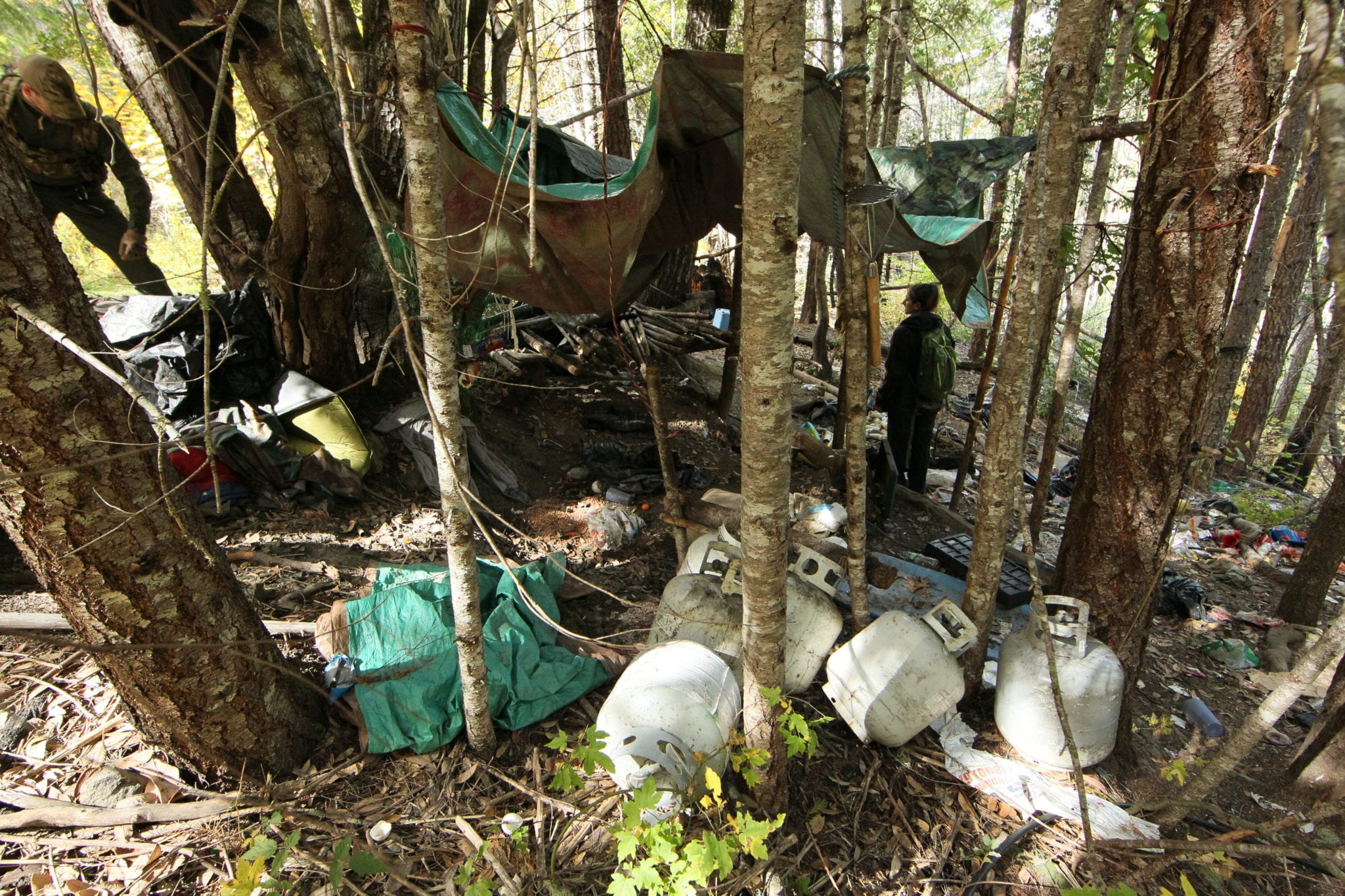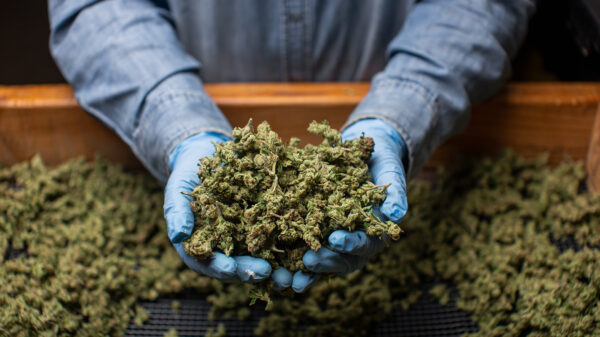Activists working in California’s public wilderness to remove illicit cannabis grows — hundreds of which use carbofuran, a pesticide banned in the United States for its high toxicity — have seen the number of sites increase for the first time in 15 years.
As the pandemic constrained already struggling enforcement efforts, illicit operators have seized on the opportunity to ramp up cultivation and sales to the profitable, multistate black market.
And they’re not the mix of hippies and rednecks that popularized growing weed in Californian forests. Experts estimate that more than 95 per cent of the sites are run by Mexican cartels that care little about the environmental fallout of their methods.
The toxic carbofuran they use kills wildlife, taints waterways, spreads into the air as pressurized cylinders explode during wildfires, and travels in or on weed plants to consumers on the other side of the country.

A sign in the famous weed cultivation hub of Humboldt County, California, encouraging growers to get licensed in August 2016. Photo by Tony Webster via Wikimedia Commons
Reclamation efforts have been underfunded and unorganized. Cartels are taking advantage
Twenty million acres of dense national forest conceal an unregulated industry on California’s public lands. Organizations like the Cannabis Removal on Public Lands Project (CROP) and the International Cannabis Farmers Association (ICFA) say California law enforcement need help.
“The law enforcement presence on those federal lands in California is extremely undermanned and outgunned,” explains Rich McIntyre, director of CROP.
There’s only one officer for every quarter-million acres of land, he says, and while growers have semi-automatic weapons, federal rangers are walking around with .38-caliber rifles.
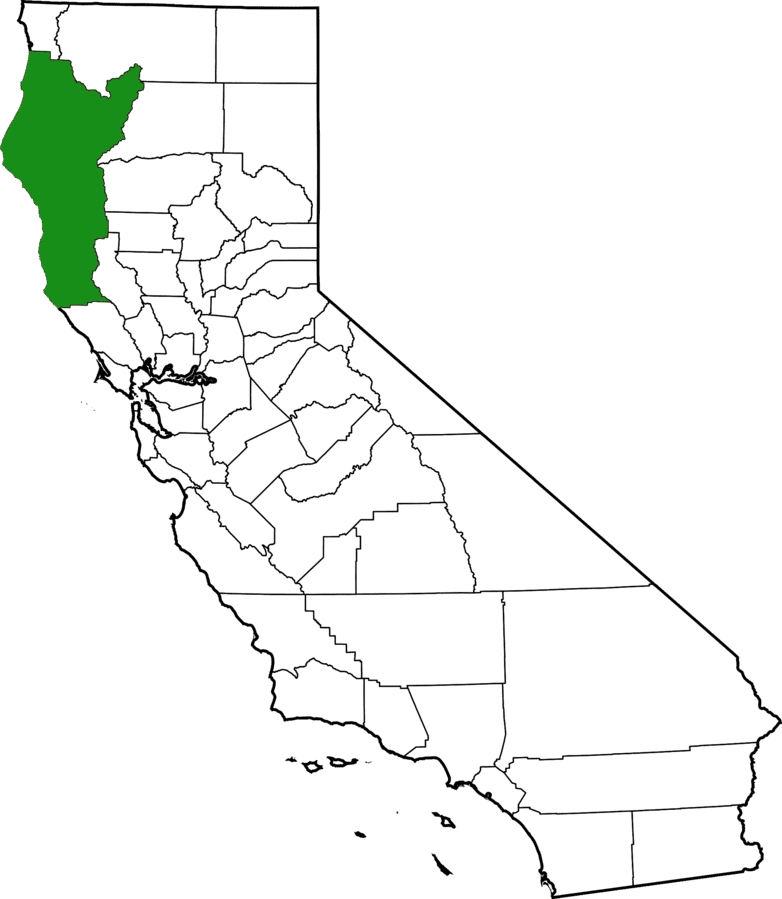
California’s ‘Emerald Triangle,’ — encompassing Humboldt, Mendocino and Trinity counties — is one of the most famous regions for growing cannabis in the world. Growers there are credited with popularizing ‘sinsemilla’ which refers to the practice of removing all male plants from a site to eliminate seeds and increase resin production. Image by O’Dea via Wikimedia Commons
“Covid has emboldened them to increase the number of grows this year for the first time in 15 years,” he says. “Law enforcement is seeing trespass grow activity on federal lands at pre-legalization levels.”
And reclamation efforts have gotten harder as funds from the U.S. Forest Service budget have shifted towards fire abatement and suppression to deal with the increase in wildfires. But an uptick in wildfires is one of the symptoms of the trespass grows.
“It looks like the Dolan fire was set, at least in part, to try to draw attention away from the growing sites,” McIntyre says. “Someone sets a fire someplace else just trying to attract attention from you as you’re growing.”
That fire had devastating consequences including killing 11 endangered condors, and the debris contributed to the massive landslide that destroyed a section of Highway 1 earlier this month.
CROP’s goals are to get more state and federal resources for reclaiming trespass grow sites, expand forest service law enforcement in national forests and increase criminal penalties for bringing toxic chemicals onto public lands.
Toxic pesticides, including carbofuran, can be vaporized during wildfires, creating noxious fumes that are toxic to the nervous system — which can cause dizziness, nausea and sometimes seizures or cardiac arrest.
McIntyre says the presence of carbofuran has impeded firefighters’ efforts to douse wildfires.
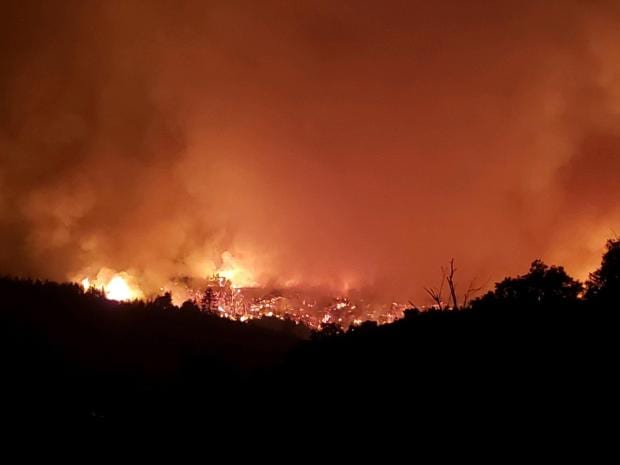
The Dolan fire raged from September to December in 2020. A man originally said the fires were set to hide a series of murders, but doubts have been cast on the accuracy of his claims as well as his mental fitness. Public domain image
Increase enforcement or defund the police?
However, a movement asking for increased law enforcement is difficult in 2021, when many are calling to defund the police.
Specifically people involved in cannabis cultivation, which have long been the most vulnerable in the industry, are now being left behind as the marijuana movement is dominated by big capital interest.
Californian jurisdictions have created state-supported social equity programs to get people from minority and underprivileged groups involved in legal cannabis. The program provides help to break into the high-barrier industry, and even supplies the cultivation applications in Spanish.
Read more: Neglecting legacy cannabis operators is costing California billions a year
Read more: San Francisco dispensary CEO alleges foul play in High Times pot shop deal
But the programs have been rife with failure and corruption, and many aren’t at all interested in joining the licit industry.
“Typically, the reason why people continue to cultivate on public lands is because there’s no cost,” says Jackee Riccio, regional field director at CROP. “They can use water, they can use land, they don’t have a landlord, they don’t owe money. And they definitely don’t have money for the taxes.”
According to Riccio, the group most impacted by the trespass grows are tribal communities living on the lands. CROP has included Indigenous leaders from regional tribes into their program. Some of the growers are cultivating on tribal land, which affects the tribes’ cultural resources, harming their way of life both physically and spiritually.
The hope with legalization was the cartels would struggle to find a market, but the illicit sector is strong as ever. ICFA executive director Kristin Nevedal notes that cannabis on the unregulated market sells for about 60 per cent more.
“There’s zero overhead in the illicit market,” she says. “There’s zero testing expenses. There’s zero taxes. Those price points are factored in and everyone [on the legal side] has so much expense that they can’t afford to pay the farmer US$1,600–$1,700 a pound on cannabis.”
But illicit operators can. In contrast, the legal rate for harvested weed is around US$1,000 per pound.
CROP estimates that 80 per cent of the trespass cannabis is going to East Coast cities and upper Midwest cities, like Chicago, New York and Boston.
Known and unknown harms of toxic carbofuran
The trespass grows are harmful to the environment, wildlife and humans. Growers haul in huge amounts of trash, planting equipment and habitation infrastructure like stoves into the previously pristine natural landscape.
Most of the sites use carbofuran. A quarter teaspoon can kill a full-grown bear. Direct human exposure to the chemical is extremely toxic, and can be deadly.
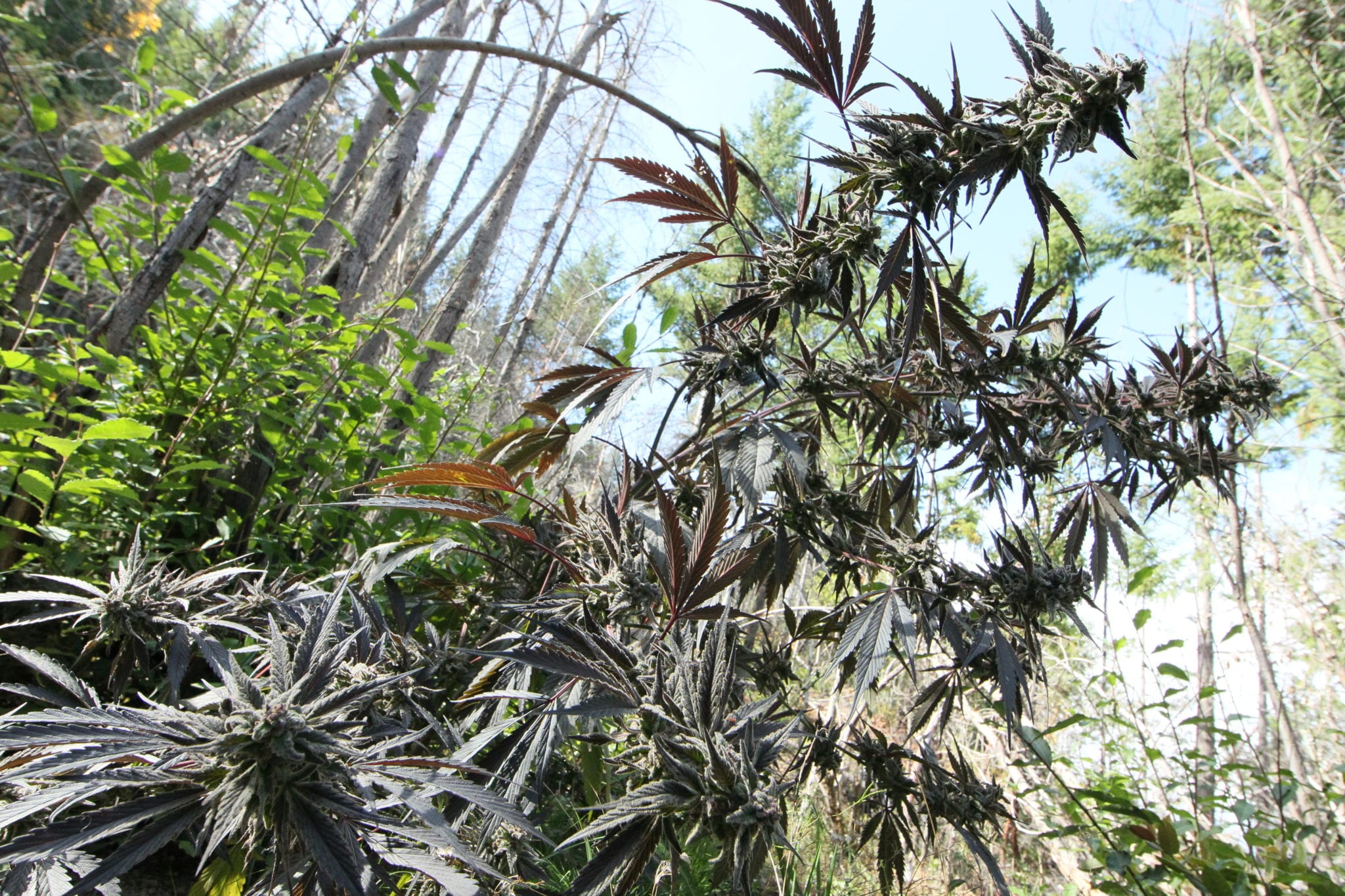
Cannabis bioaccumulates materials from the soil, like pesticides, better than most food crops. Photo by Hung T. Vu via CROP
“Every site is responsible for five or 10 animal deaths,” says Greta Wengert, executive director of the Integral Ecology Research Center. Extrapolating that number across the 300–400 grow sites, she estimates that hundreds or thousands of animals die as a result each year.
While workers using carbofuran are vulnerable to exposure themselves, some experts are concerned the pesticide could be harming cannabis users. According to Riccio, weed is a very good bio-accumulator, meaning it can easily uptake chemicals from the soil.
While it’s possible that cannabis grown with carbofuran could negatively impact health when inhaled or ingested, little research has been done on the effects or how much of the pesticide is making its way to consumers.
Wengert has tested ready-for-sale product found on raided grow sites and found carbofuran in the buds.
The pesticide has been banned in the U.S., but the World Health Organization says carbofuran is generally not found in other treated crops, so the greatest risk is likely direct exposure either in the air, water or on the plant’s surface.
CROP is asking for US$25 million from Congress to curb trespass grows
To shutdown trespass grows and get carbofuran-tainted weed out of the unregulated market, organizations need money and resources.
CROP is supporting a bipartisan bill in Congress seeking US$25 million over five years. The bill proposes the money go toward increasing law enforcement and general funding to dismantle the sites.
One of the biggest challenges is removing all the grow-site infrastructure so it can’t be easily replanted the next season.
“With trespass cultivation you can eradicate, meaning cut down the plants and haul them out, but enforcement doesn’t remove the water dams that were put in, remove the miles of water line, take out the supplies that were brought in including the trash, nutrients, and pesticides, or take out the miles and miles of drip irrigation,” says Nevedal of the ICFA. “When that infrastructure remains in place, that location is a perfect target to be replanted.”
With the grow sites buried deep in national forests, there are no roads to easily remove the infrastructure and, according to Nevedal, dragging it out by hand is unrealistic. Usually, helicopters are required.
But for years the reclamation effort has been put on the back of law enforcement without adequate funding or partnerships, so the logistics for coordinated reclamation efforts has been largely out of the picture.
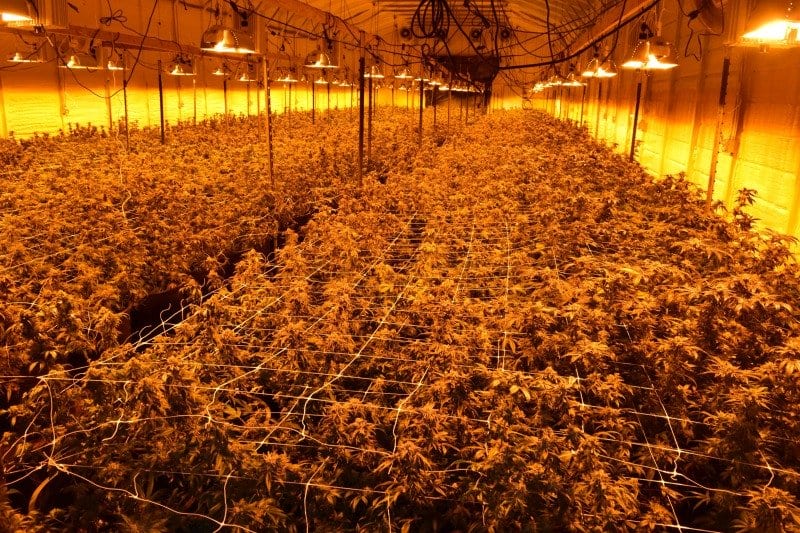
‘May 26, 2020, deputies with the Humboldt County Sheriff’s Office Marijuana Enforcement Team (MET) served one search warrant … During the service of the warrant, deputies eradicated approximately 18,690 growing cannabis plants. Deputies seized and destroyed approximately 818 pounds of cannabis bud.’ From Humboldt County Sheriff’s Office press release. Public domain image
“People have a false sense that law enforcement should be responsible for the cleanup side of things,” Wengert says. “ I can’t express how far from the truth that is. If they had the support, funding, collaboration, and partnerships to spearhead they would do it.”
“I don’t think a finger can be pointed at any one entity or any group for not doing this. It’s a collective effort that, until recently, has really had no funding. And there’s really no one to blame specifically for that, except that people weren’t aware of this problem.”
Update 2021-2-17 3:05 pm PST: A series of clarifications by sources in the article have been made since its publication. Those include: a quote referring to “public” not “private” lands, a quote referring to tribal “lands” not tribal “mounds,” CROP “supporting” and not “presenting” a bill to Congress, the amount of carbofuran needed to kill a bear, how The California Cannabis Equity Act is administered and the lack of adequate funding provided by the state for reclamation efforts.
Top image by Hung T. Vu via CROP

